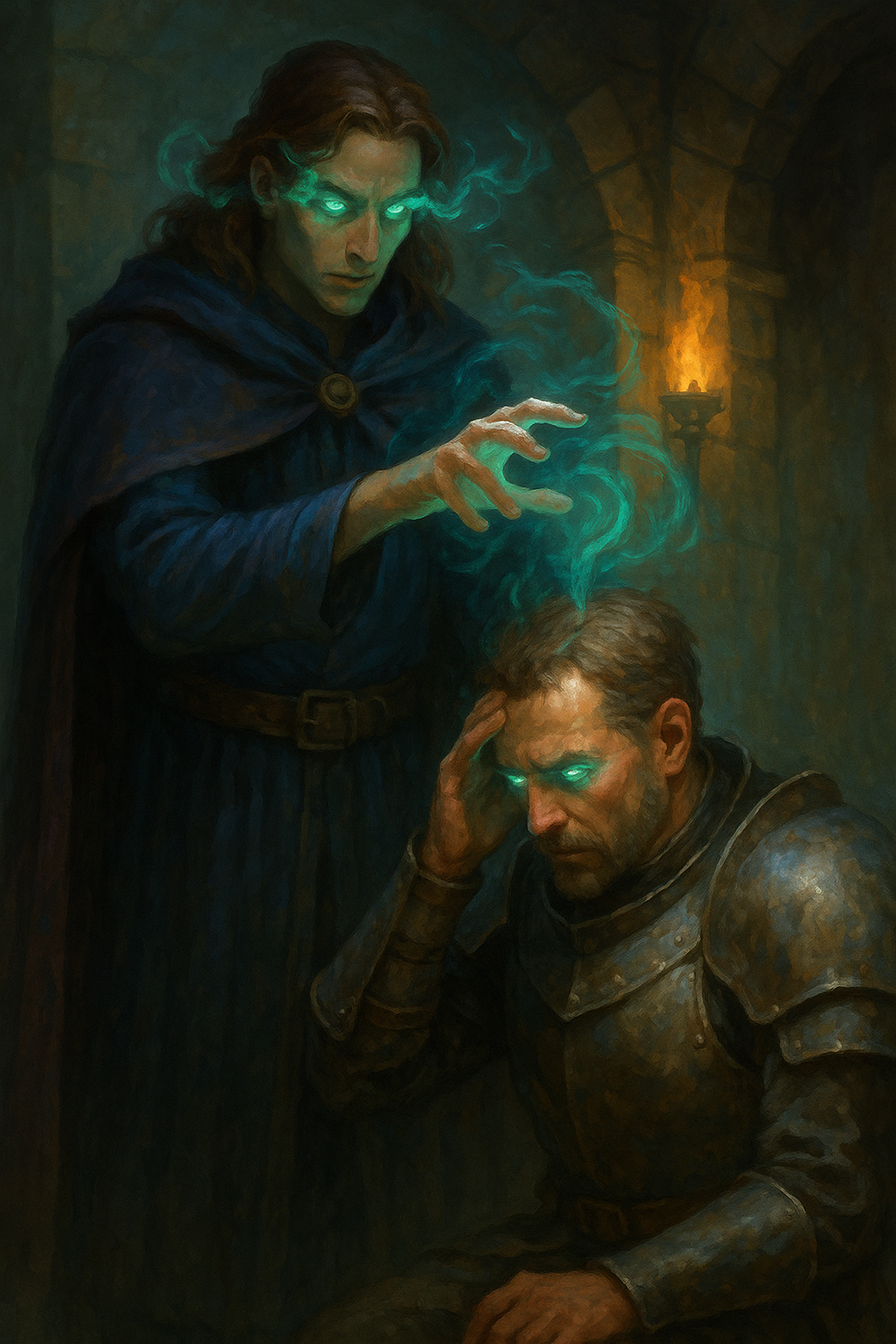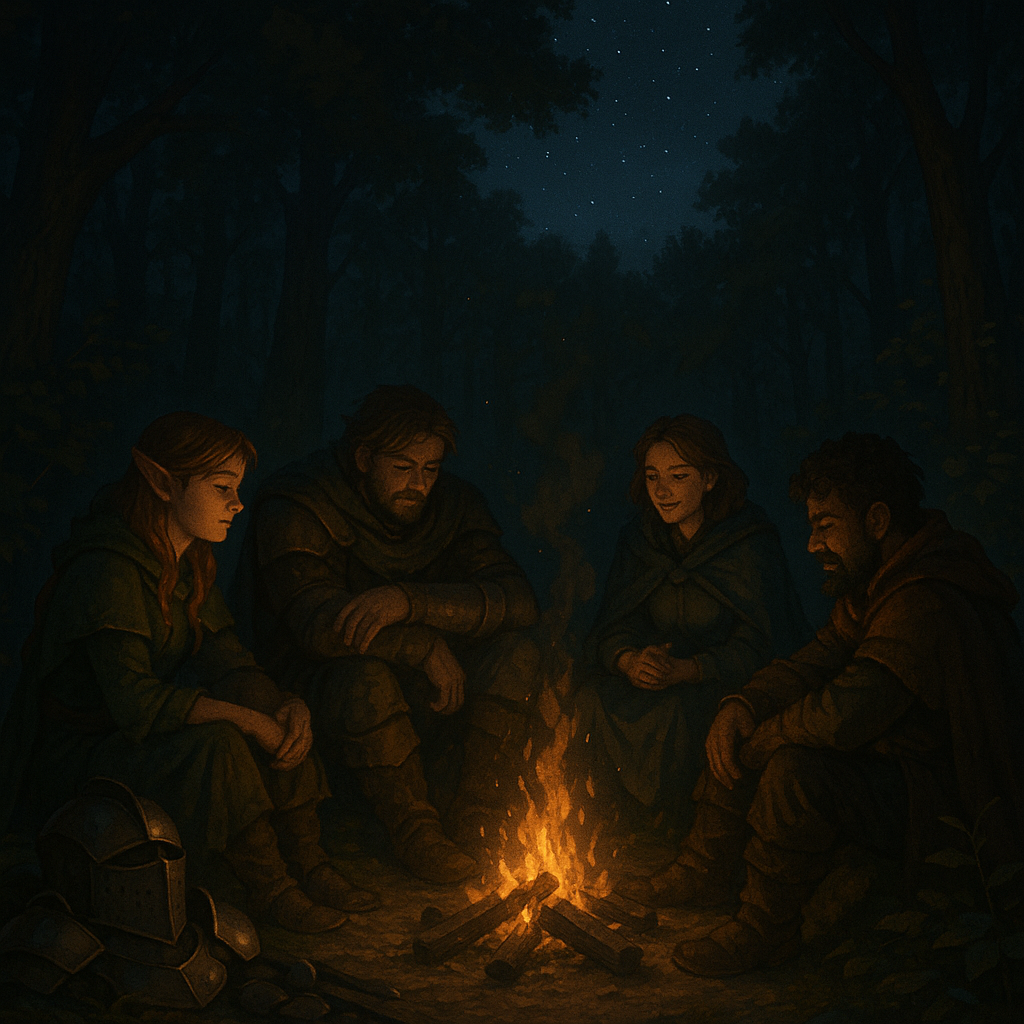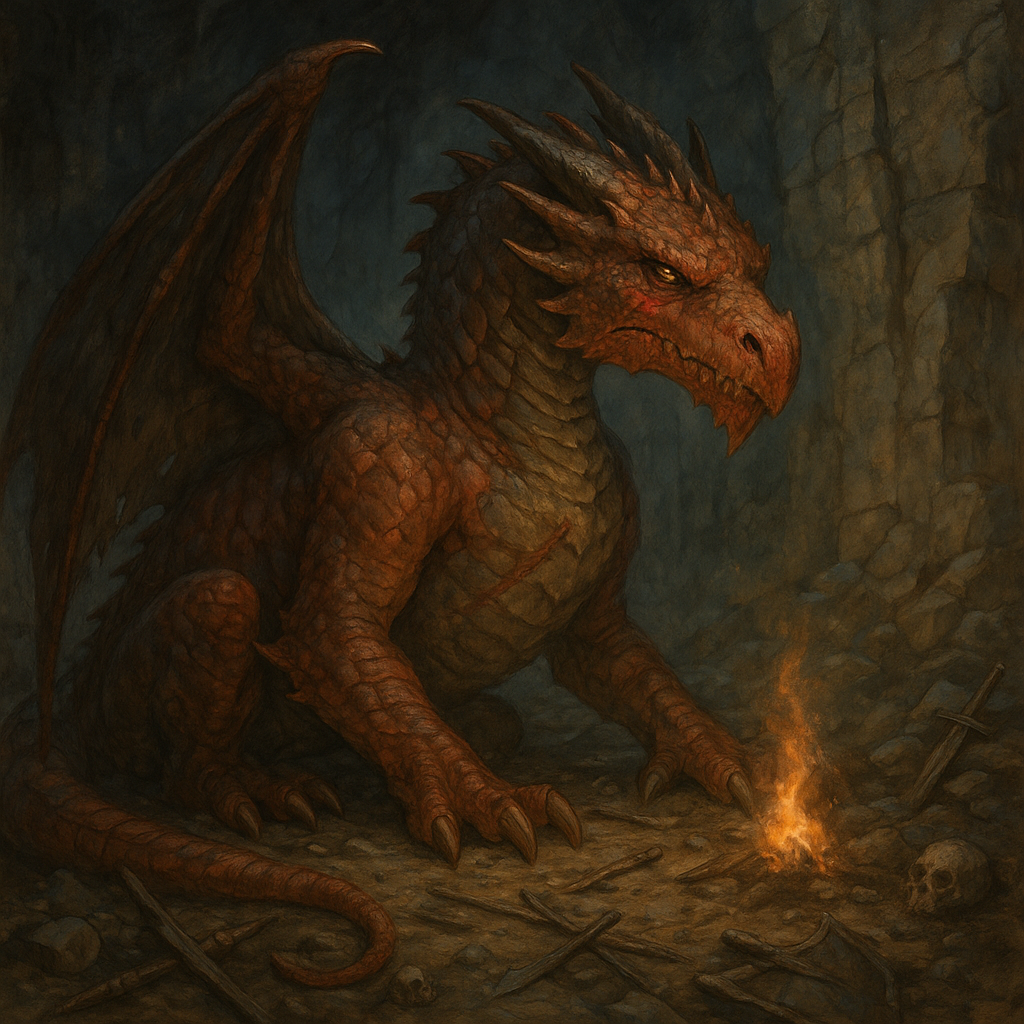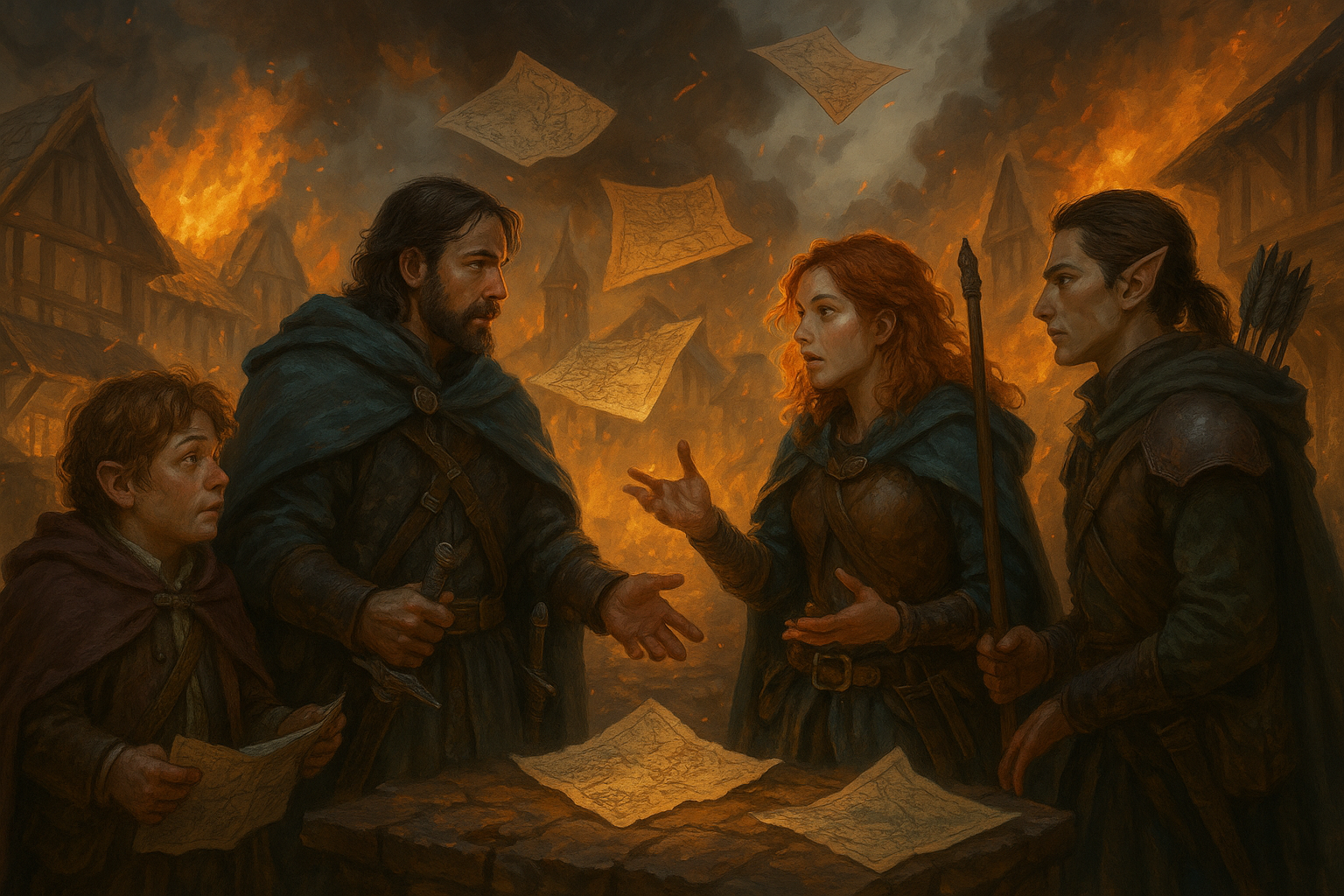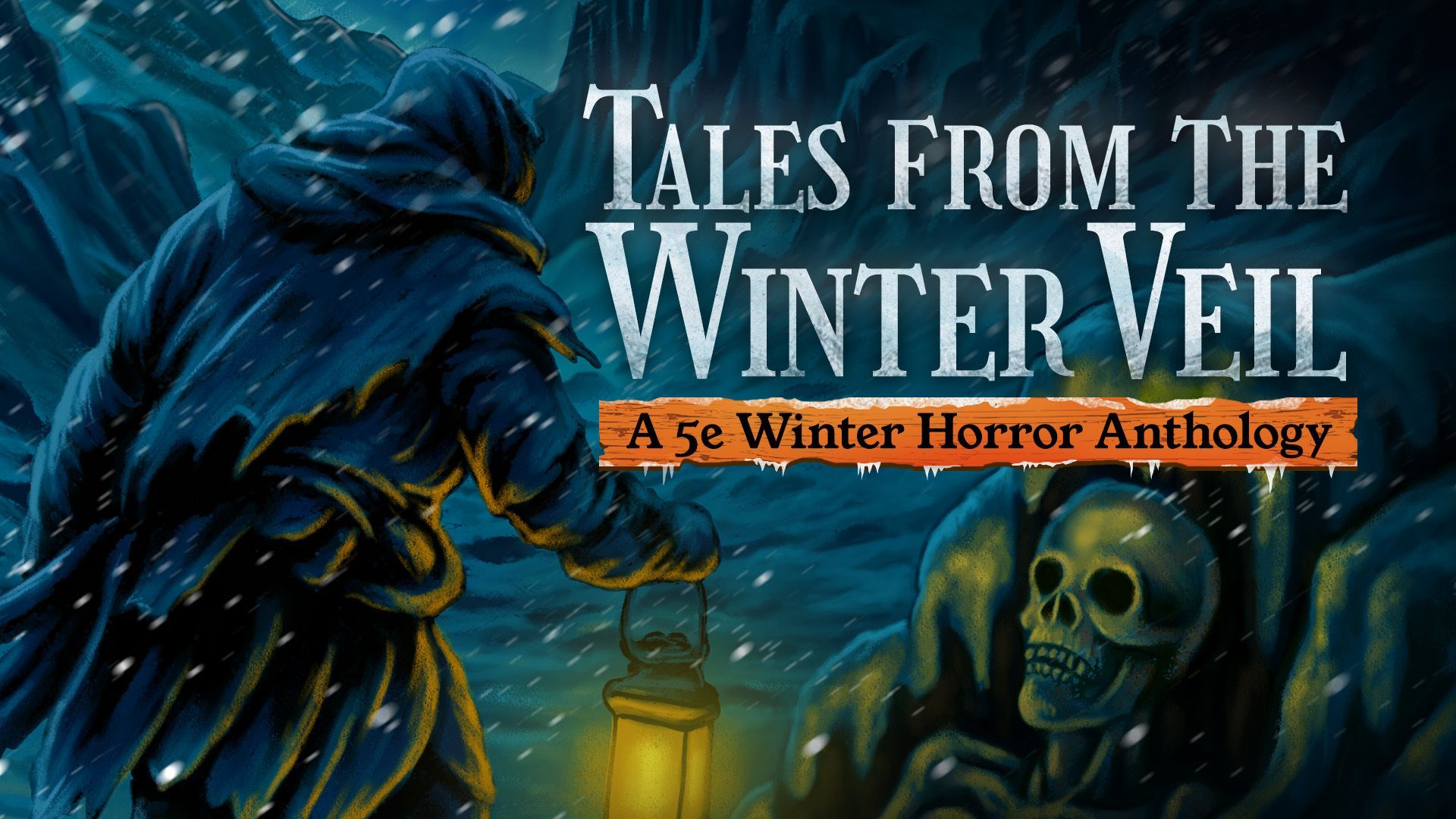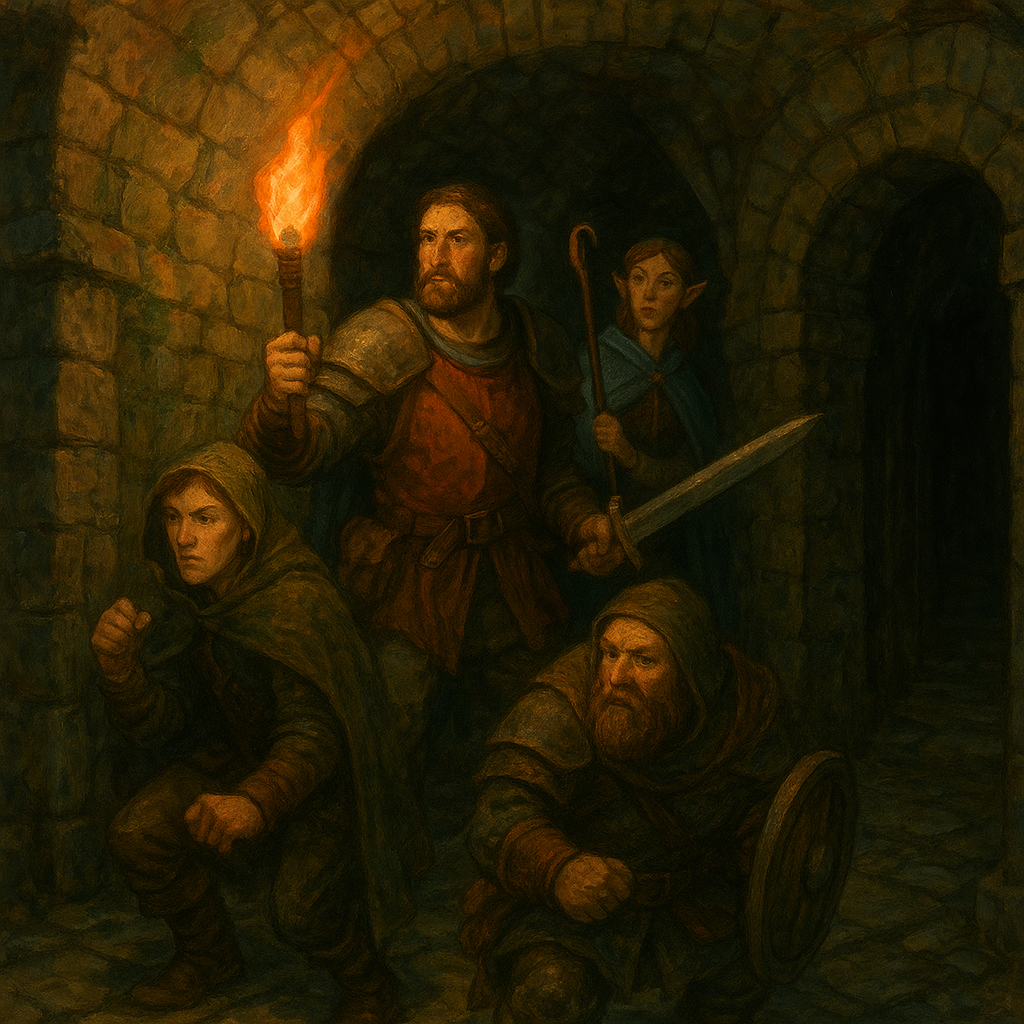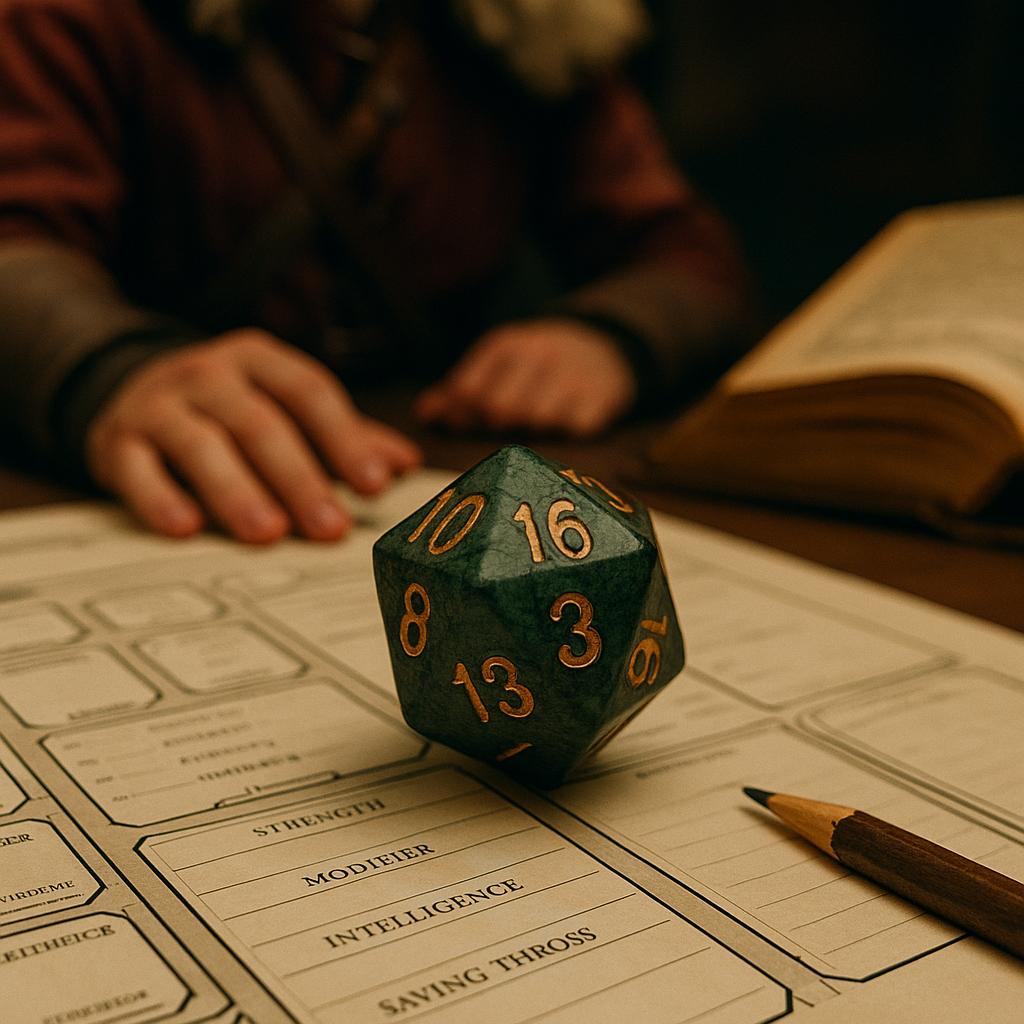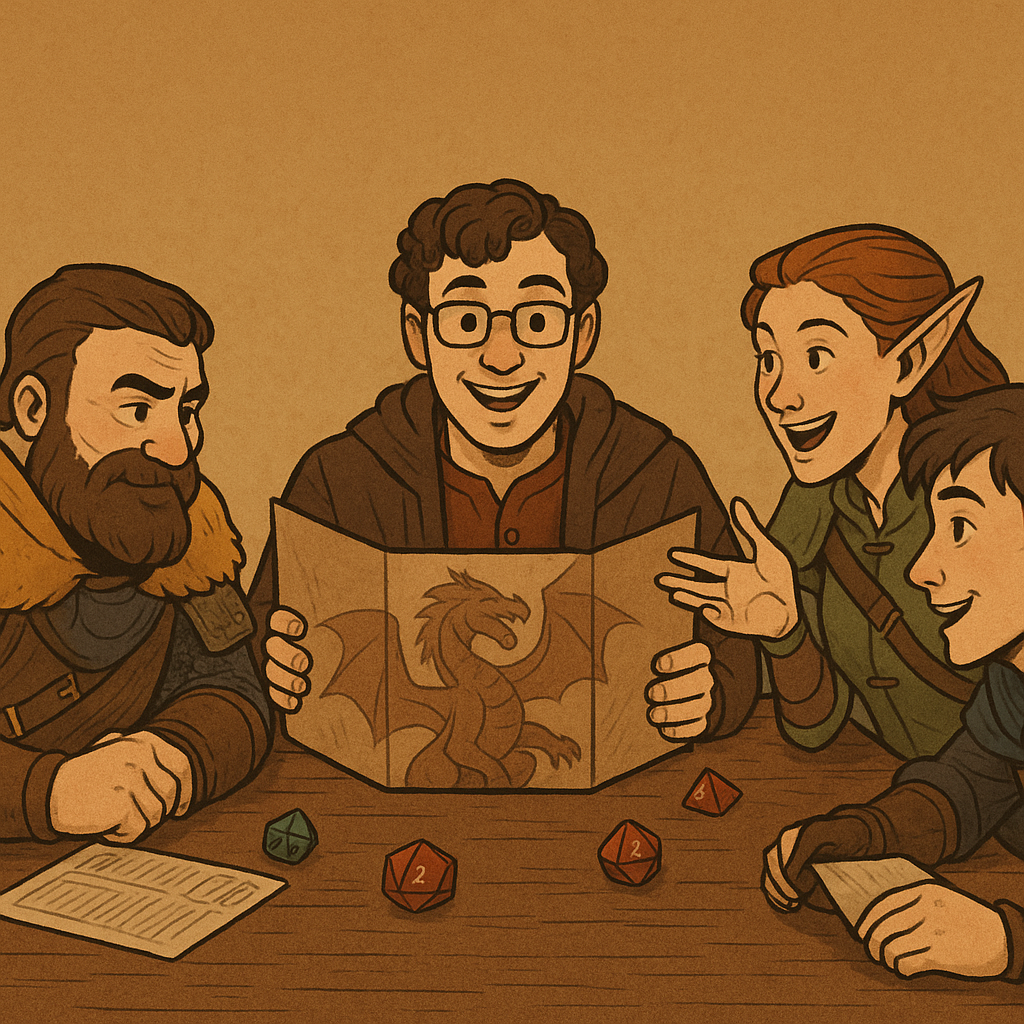The Moral Economy of Loot: Why Players Steal, Hoard, or Donate
Yessss...my precious...
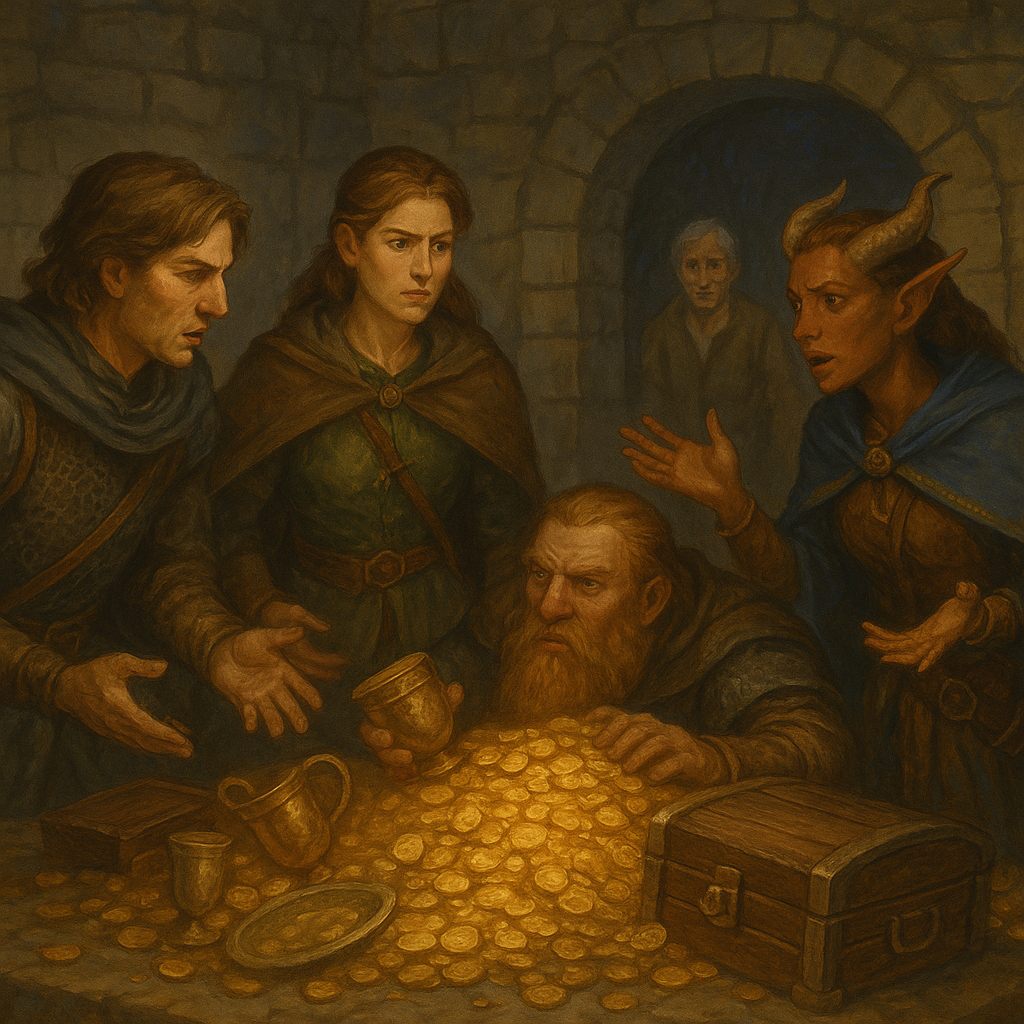
Dear Readers,
Nothing brings out the heart of a player character like the glint of gold in a darkened corridor. Treasure in Dungeons & Dragons is more than shiny currency; it’s a catalyst for story, a mirror of character values, and a negotiation between the mechanics of reward and the psychology of ownership. As Dungeon Masters, we watch our players pick through chests and count coins, but behind every coin is a choice — and behind every choice is a moral economy.
Why do some players steal everything not nailed down, others hoard piles of gold without spending a copper, and still others give away their spoils to the nearest orphanage? The answer lies at the intersection of human behavior, game mechanics, and narrative design. In this post we’ll explore the moral economy of loot: why players behave the way they do with treasure, how you can understand and guide those behaviors as a DM, and how to turn loot into an engine for storytelling rather than an afterthought.
Treasure as a Psychological Catalyst
The first thing to recognize is that treasure is a reward system — and reward systems affect behavior. Loot in D&D combines the tangible (gold pieces, magic items) with the symbolic (status, power, and narrative significance). When you place a chest of coins or a glittering sword in front of your players, you’re presenting them with a microcosm of the campaign’s moral landscape.
The Rush of Discovery
Opening a chest taps into the same psychological trigger as opening a mystery box or earning a loot drop in a video game. This intermittent reward structure releases a hit of excitement and anticipation. Players feel rewarded simply for checking, searching, and taking risks.
Ownership and Identity
What a character chooses to do with loot reflects their identity. A paladin may see gold as a resource for the temple. A rogue may see it as leverage or a ticket to freedom. A wizard may see it as fuel for research. This mirrors real-world behavior: people’s spending habits often reflect values, aspirations, and self-concept.
Why Players Steal
At many tables the classic joke is that rogues loot bodies while the fight is still going on. But beneath the humor is a real phenomenon: players taking what they can, often regardless of morality.
The Power of Agency
D&D grants freedom, and stealing is one of the purest expressions of that freedom. In real life there are consequences for theft. In a game world, the consequences are up to the DM. Players enjoy testing boundaries to see how far they can push the setting.
Accumulation as Security
In uncertain environments, wealth equals survival. Players hoard or steal because they’ve been trained by many games to expect scarce resources. This is especially true in early-level campaigns where healing potions and spell components can make the difference between life and death.
Alignment as License
Characters aligned toward chaos or evil see theft as a natural extension of their ethos. Even neutral characters may justify it as pragmatism. Without clear in-game social consequences, theft feels like free money.
Narrative Mischief
Some players simply enjoy the drama. A bit of pickpocketing can create tension with NPCs, inter-party conflict, or humorous mishaps. If handled with consent and care, this can add spice to the story.
Why Players Hoard
If theft is about acquiring, hoarding is about retaining. Many players accumulate treasure far beyond their immediate needs.
Deferred Gratification
Players may wait for a “big purchase” like a castle, a magic item, or a resurrection fund. Hoarding becomes a strategy of control, a way to plan for the future.
Game Uncertainty
Just as players steal because they fear scarcity, they hoard because they distrust the future. They don’t know what you’ll throw at them next. Better to keep gold in the pouch than spend it frivolously.
Status and Measurement
Hoarded wealth becomes a scoreboard. Players compare totals, brag about net worth, or treat it as a sign of campaign success. In some ways, gold becomes XP’s shadow twin — another metric of accomplishment.
Why Players Donate
The least common but often most dramatic behavior is donating or sacrificing wealth. Yet when it happens, it’s powerful.
Roleplaying Virtue
Players who donate often do so for character reasons. A cleric might tithe to a church. A paladin might fund an orphanage. This reinforces alignment and builds world texture.
Buying Narrative Impact
Some players donate to create change. They fund a militia, build a bridge, or endow a scholarship. This turns gold into story. It also signals to the DM: “I want to engage with the world beyond combat.”
Subverting the Meta
In a game where hoarding and theft are common, generosity stands out. A donation scene can become as memorable as a boss fight, precisely because it defies the norm.
The Moral Economy in Action
The moral economy of loot is the invisible web of expectations, consequences, and meanings surrounding treasure in your campaign. As a DM, you’re the architect of that economy. You decide how easy it is to steal, how wealth changes hands, how society reacts to hoarding or generosity, and how loot translates into power.
Scarcity vs. Abundance
Do your dungeons drip with gold or are coins hard-won? Scarcity encourages theft and hoarding. Abundance encourages spending and generosity. By modulating loot frequency, you shape player behavior.
Consequences and Reputation
Do NPCs notice when the party steals? Do temples publish donor lists? Does flaunting wealth attract thieves or suitors? Consequences make loot morally weighty rather than a simple number.
Social Currency
Gold is only one kind of currency. Influence, favors, and reputation can function as alternate loot. A noble’s gratitude might be worth more than platinum. A secret might unlock more doors than a jeweled key. When you diversify currencies, you broaden the moral economy.
Turning Loot into Story Hooks
Loot can be more than a prize; it can be a plot. By embedding story in treasure, you give players reasons to care beyond monetary value.
The Cursed Item
An amulet that drains life in exchange for power forces a moral decision. Will they use it anyway? Will they sell it to an unwitting buyer? Will they destroy it?
The Tied-In Relic
A sword belonging to a fallen hero may carry obligations. Perhaps the hero’s descendants want it back. Perhaps the sword itself demands honorable use.
The Communal Treasure
A dragon’s hoard full of stolen village heirlooms can’t simply be pocketed. Returning the items wins goodwill; keeping them breeds resentment.
Understanding Player Archetypes
Not every player approaches loot the same way. By understanding archetypes you can tailor your approach.
The Collector
This player wants cool items and will take risks to get them. They love unique descriptions and backstory for loot.
The Accountant
This player tracks every copper and plans expenditures. They thrive on spreadsheets and resource management.
The Roleplayer
This player cares about how loot fits their character’s personality. They’ll donate, destroy, or refuse items that feel “out of character.”
The Chaos Agent
This player likes stealing and hoarding because it creates drama. They may spark conflicts or side plots around treasure.
Recognizing these archetypes helps you predict behavior and avoid misunderstandings.
Moral Dilemmas as Gameplay
Use loot to present moral dilemmas. Instead of bland piles of gold, give choices with consequences.
Examples
- A temple’s treasury lies open during a crisis. Taking the gold now could save your lives but doom the temple later.
- A noble offers a bribe to betray a faction ally.
- A magic item can be sold for riches or used to heal a dying village.
By embedding such dilemmas, you transform loot from a static reward into a dynamic story engine.
Encouraging Healthy Party Dynamics
Loot division is often the first real negotiation your players do as a group. It’s a microcosm of their ability to collaborate.
Clear Rules
Decide how loot is divided before it becomes an issue. Will you split gold evenly? Roll for magic items? Use a point-buy system? A two-minute discussion in session zero can prevent an hour of squabbling later.
Spotlight Sharing
When a player finds loot that obviously benefits another character, highlight the opportunity to share. “This wand seems attuned to someone who uses arcane magic.” This frames sharing as smart play, not sacrifice.
Cultural Context in Your World
Incorporating your world’s cultural attitudes toward wealth can make loot behavior more interesting.
Regional Variations
Maybe dwarves see hoarding as virtuous but elves see it as shameful. Maybe paladins must tithe a percentage of loot. Maybe certain coins are cursed or illegal in some kingdoms.
Symbolic Items
Introduce cultural treasures that are valuable not for their gold content but for what they represent. A ceremonial mask, a treaty scroll, a banner of a lost legion. Such items challenge players to think beyond resale value.
NPC Reactions to Loot Behavior
NPCs can reinforce or challenge the party’s choices.
- Merchants might raise prices for characters known to steal.
- Priests might offer blessings to generous donors.
- Thieves’ guilds might court or threaten characters who flaunt wealth.
By making NPC reactions consistent, you make the moral economy feel real.
Spending Gold as Character Development
Encourage players to describe how they spend their gold between adventures. This can lead to rich roleplay.
Examples:
- Funding a play that spreads their legend.
- Building a shrine to a fallen comrade.
- Buying a ship or hiring a crew.
Spending scenes deepen immersion and provide you with hooks for future adventures.
Integrating Magic Items Into the Economy
Magic items are not just loot; they’re power multipliers. Their distribution and availability profoundly affect your campaign’s moral economy.
Rarity and Choice
If magic items are rare, players will hoard and cherish them. If they’re common, players will experiment and trade. Set your magic economy intentionally.
Moral Weight
A sentient weapon or cursed artifact imposes choices. A legendary staff stolen from a temple could trigger a holy war. These items can drive entire arcs.
Loot as a Reflection of Campaign Themes
Think about your campaign’s themes and align loot accordingly.
- In a gritty survival campaign, treasure may be mundane and practical.
- In a heroic epic, loot may be mythic and symbolic.
- In a political thriller, loot may take the form of secrets, leverage, and favors.
Aligning loot to theme reinforces immersion.
Rewarding Non-Material Achievements
Not all rewards must be loot. Titles, land grants, alliances, and magical boons can substitute for gold. This satisfies players who prefer narrative impact over numbers and creates a more varied moral economy.
Case Study: The Dragon’s Hoard of Galthar
Let’s build an example of the moral economy in action.
The party defeats Galthar, an ancient green dragon. In its hoard they find not only piles of gold but also sacred relics stolen from nearby villages.
- They can keep the gold and relics for themselves, gaining immense wealth but alienating the villagers.
- They can return the relics, winning reputation and allies.
- They can ransom the relics back to the villages, blending greed with pragmatism.
Each choice has consequences. The villagers might build statues, hire assassins, or spread rumors depending on the outcome. The loot becomes a fork in the narrative road.
The Ethics of Resurrection and Wealth
Another overlooked aspect of the moral economy is the cost of resurrection magic. When a party member dies, they may need thousands of gold pieces for a Raise Dead spell. This creates intense moral pressure: do they hoard gold “just in case,” or spend it on current needs and risk permanent loss later?
You can dramatize this by introducing NPCs who need resurrection but can’t afford it. Will the party donate? Will they bargain? Will they exploit? Such scenarios tie wealth to life and death decisions.
Turning Hoards Into Hubs
If your players hoard wealth, give them reasons to invest. Let them build a base, hire retainers, or influence politics. This turns hoarding from a dead end into a story engine.
Examples:
- Establishing a thieves’ guild with their gold.
- Funding an expedition that uncovers a lost civilization.
- Endowing a magical college that produces new allies.
By giving their gold narrative gravity, you reward hoarding without trivializing it.
Loot Tables with Story Hooks
Revise your loot tables to include story seeds. Instead of “500 gold pieces,” try “500 gold pieces in ceremonial coins minted by a long-dead emperor.” Instead of “a +1 sword,” try “a sword with a notch for every soul it has slain.”
These details invite questions. Who was the emperor? Why are the coins still circulating? Who forged the sword? Players who care about these answers will engage more deeply.
Player Buy-In and Transparency
Let your players know you’re interested in their characters’ relationship with loot. Ask them during session zero: “What does your character value most? Wealth, power, or reputation?” This primes them to think of loot as more than numbers.
Transparency about loot distribution also prevents resentment. When players trust you to be fair, they’re more willing to make morally interesting choices.
Loot as a Tool for Player Agency
Ultimately, loot is one of the most flexible tools for giving players agency. By deciding what to take, keep, spend, or give away, they shape the world. You can enhance this agency by showing tangible consequences.
For example, if they donate gold to rebuild a village, describe the new houses on their next visit. If they hoard it and flaunt it, describe the jealous stares and targeted ambushes. These narrative payoffs turn loot decisions into story beats.
Addressing Common DM Concerns
“What if my players only care about gold?”
Lean into it. Build a world where gold opens doors but also creates obligations. Give them chances to use wealth creatively.
“What if they fight over loot?”
Establish distribution norms early and model generosity through NPCs. Use in-world institutions like guild contracts or temple tithes to create structure.
“What if they ignore story hooks embedded in loot?”
Be patient. Plant multiple hooks. Even if they skip one, they may bite later.
Blending Loot with Advancement
Consider giving narrative-based rewards in tandem with loot. A character who spares a rival might receive a boon. A player who donates gold might gain a reputation bonus or divine favor. This reinforces that moral choices around loot matter in character advancement.
Loot and Legacy
In long campaigns, wealth can create legacy. Players may leave behind foundations, fortresses, or legendary artifacts. In one-shots, you can compress this legacy into epilogues. “Ten years later, your donation funded the rise of a new city.” These glimpses into the future give weight to their choices.
The Moral Economy as Collaborative Worldbuilding
Invite your players to describe the impact of their spending. Ask, “How does your donation change the town?” or “What rumor spreads about your theft?” This co-creation deepens immersion and takes some load off you.
An Extended Example: The Broken Crown
Imagine a campaign arc called “The Broken Crown.” The players retrieve a shattered royal crown, each piece worth a fortune.
They must decide whether to return it to the exiled monarch, sell it to a rival kingdom, or reforge it for themselves. Each choice reshapes the political landscape. Returning it earns titles and allies. Selling it sparks a war but makes them rich. Reforging it crowns them as potential rulers.
Here, loot is the entire plot. The moral economy becomes the campaign’s backbone.
Final Reflections
Loot is the heartbeat of D&D’s reward system, but its rhythm is not fixed. It accelerates or slows depending on how you structure your world. By understanding the moral economy — why players steal, hoard, or donate — you can harness loot as a storytelling engine.
Do not treat treasure as an afterthought. Treat it as a character in its own right. Give it backstory, consequences, and emotional weight. Show how it shapes societies, alters reputations, and tests values.
When you do, every coin your players pick up becomes a question. Every magic item becomes a crossroad. And every donation becomes a declaration of who their characters are.
In the end, the moral economy of loot is not about gold pieces or magic swords. It is about the players’ relationship to power, choice, and consequence. As a DM, you can elevate that relationship from mere bookkeeping to mythmaking.
Until next time, Dear Readers…















